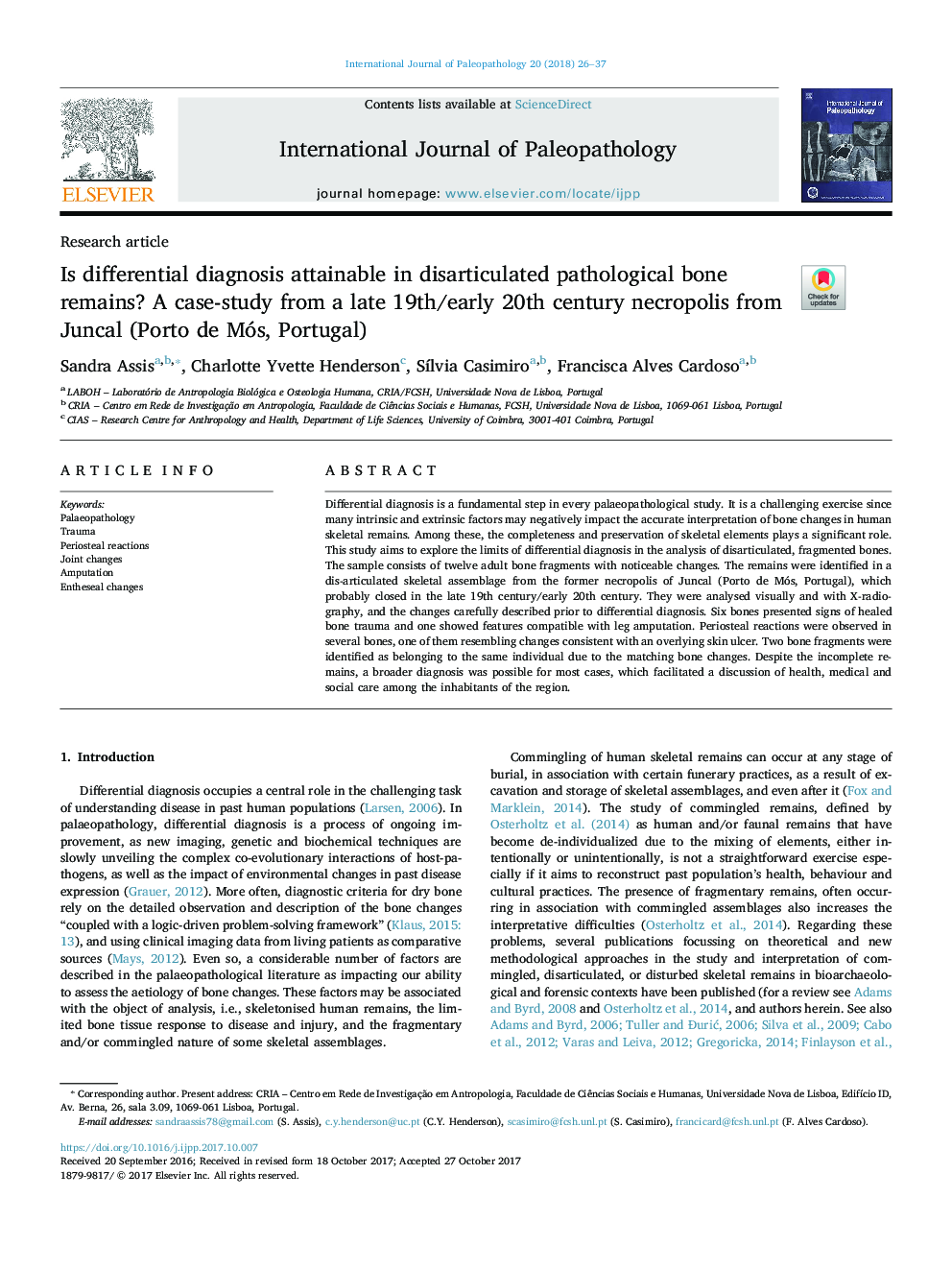| Article ID | Journal | Published Year | Pages | File Type |
|---|---|---|---|---|
| 6554778 | International Journal of Paleopathology | 2018 | 12 Pages |
Abstract
Differential diagnosis is a fundamental step in every palaeopathological study. It is a challenging exercise since many intrinsic and extrinsic factors may negatively impact the accurate interpretation of bone changes in human skeletal remains. Among these, the completeness and preservation of skeletal elements plays a significant role. This study aims to explore the limits of differential diagnosis in the analysis of disarticulated, fragmented bones. The sample consists of twelve adult bone fragments with noticeable changes. The remains were identified in a dis-articulated skeletal assemblage from the former necropolis of Juncal (Porto de Mós, Portugal), which probably closed in the late 19th century/early 20th century. They were analysed visually and with X-radiography, and the changes carefully described prior to differential diagnosis. Six bones presented signs of healed bone trauma and one showed features compatible with leg amputation. Periosteal reactions were observed in several bones, one of them resembling changes consistent with an overlying skin ulcer. Two bone fragments were identified as belonging to the same individual due to the matching bone changes. Despite the incomplete remains, a broader diagnosis was possible for most cases, which facilitated a discussion of health, medical and social care among the inhabitants of the region.
Related Topics
Life Sciences
Biochemistry, Genetics and Molecular Biology
Physiology
Authors
Sandra Assis, Charlotte Yvette Henderson, SÃlvia Casimiro, Francisca Alves Cardoso,
